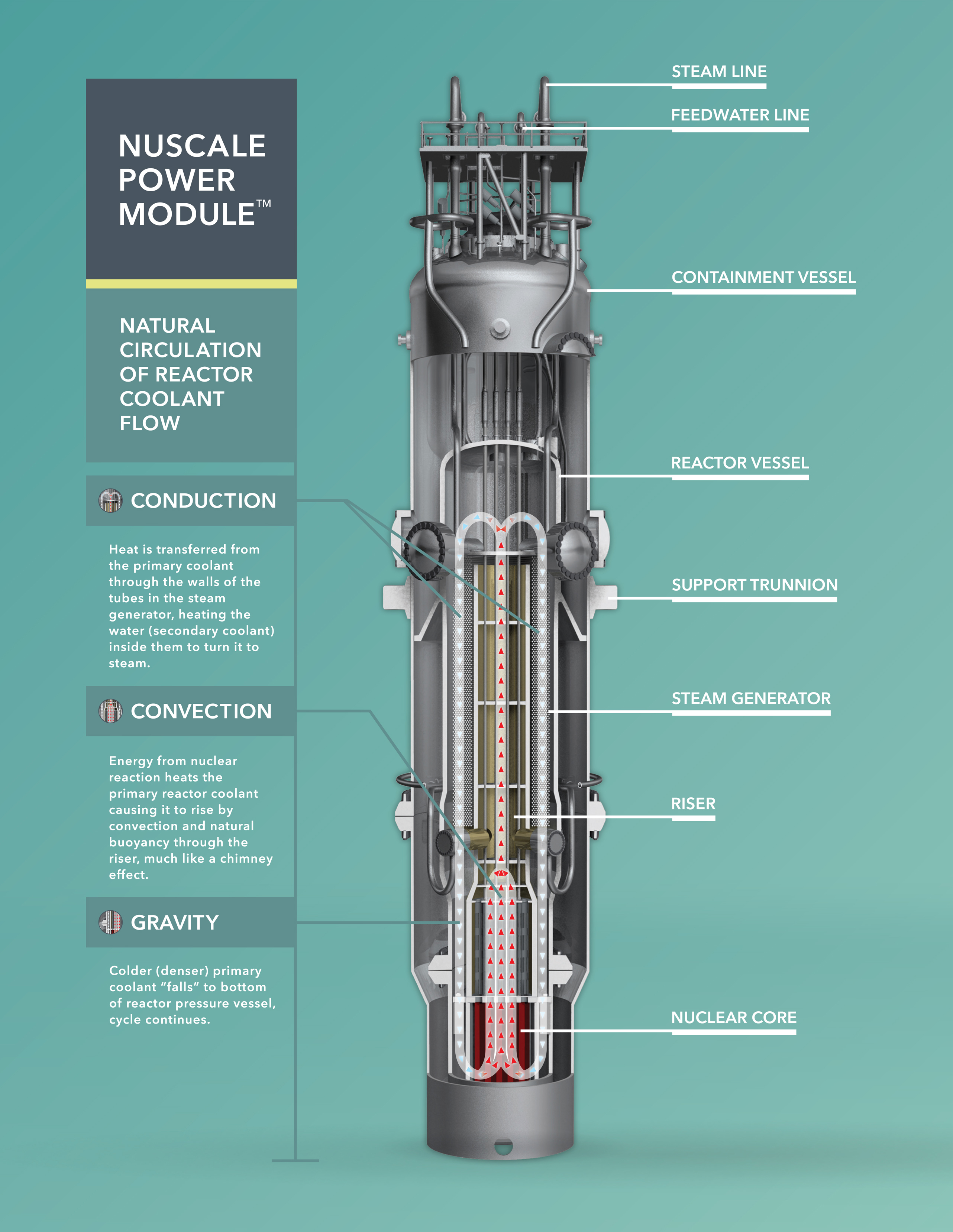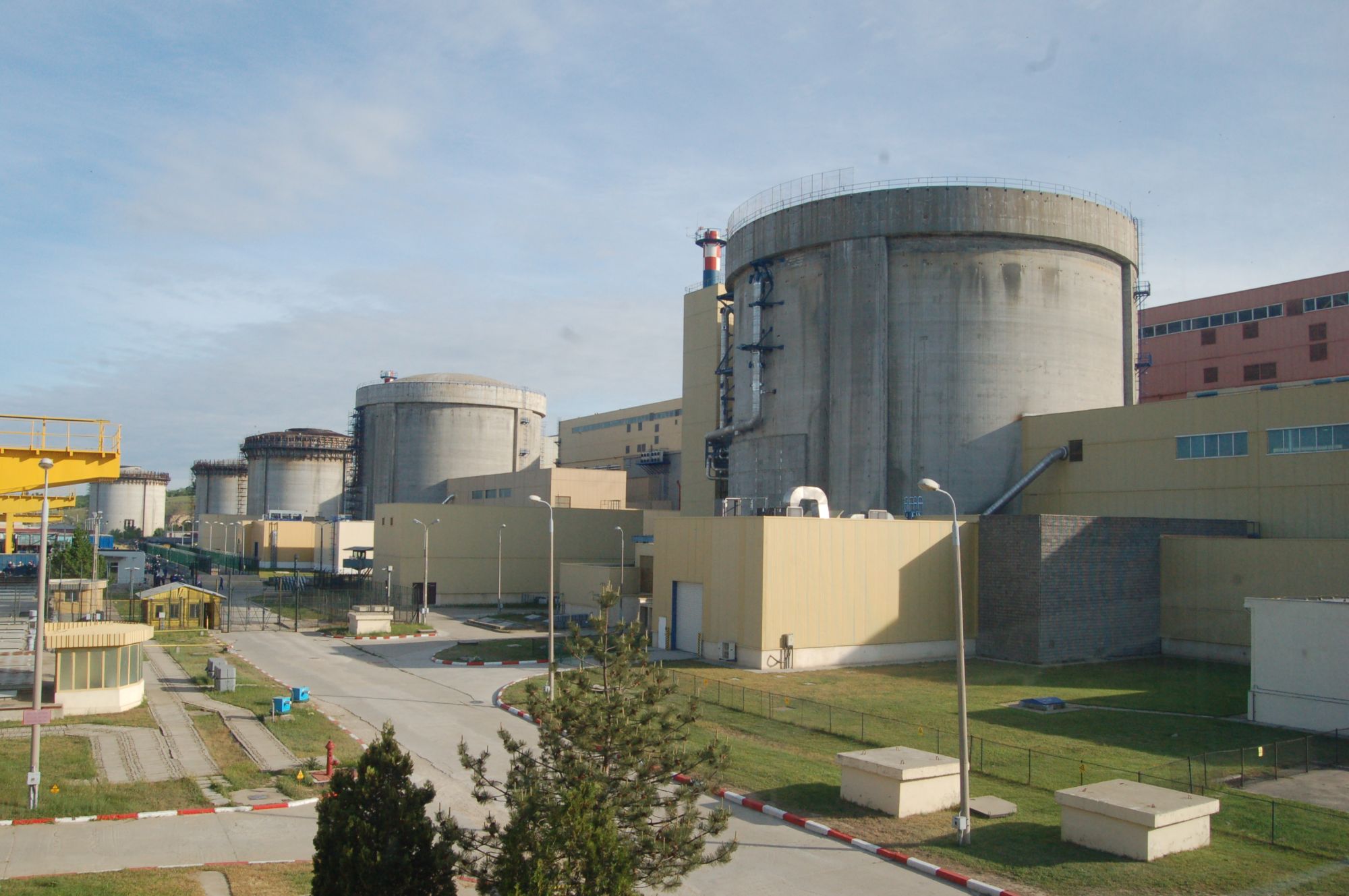|
Doicești Power Station
The Doiceşti Power Station was a large thermal power plant located in Doicești, with seven generation groups, six of twenty MW each and two of 200 MW resulting in a total electricity generation capacity of 520 MW. It used Lignite as main fuel supplemented by Natural gas . The chimney used by the 200 MW units was 208 metres tall. It was demolished to clear the site for the new project using a Small modular reactor. Operations Extension plans In 2011 Termoelectrica, the owner of the powerplant, and China Huadian Engineering agreed to build two new units of 250 MW each. The extension was cancelled in 2014 after the dissolution of Termoelectrica. Doicești location was selected to implement NuScale Power VOYGR-6 model of a nuclear power plant that will deploy six SMRs of 77 MW each with a total capacity of 462 MW. For this project Nuclearelectrica formed a new company RoPower, with equal shares with the plant owner Nova Power&Gas. RoPower signed the contract with NuScale ... [...More Info...] [...Related Items...] OR: [Wikipedia] [Google] [Baidu] |
Romania
Romania is a country located at the crossroads of Central Europe, Central, Eastern Europe, Eastern and Southeast Europe. It borders Ukraine to the north and east, Hungary to the west, Serbia to the southwest, Bulgaria to the south, Moldova to the east, and the Black Sea to the southeast. It has a mainly continental climate, and an area of with a population of 19 million people. Romania is the List of European countries by area, twelfth-largest country in Europe and the List of European Union member states by population, sixth-most populous member state of the European Union. Europe's second-longest river, the Danube, empties into the Danube Delta in the southeast of the country. The Carpathian Mountains cross Romania from the north to the southwest and include Moldoveanu Peak, at an altitude of . Bucharest is the country's Bucharest metropolitan area, largest urban area and Economy of Romania, financial centre. Other major urban centers, urban areas include Cluj-Napoca, Timiș ... [...More Info...] [...Related Items...] OR: [Wikipedia] [Google] [Baidu] |
Doicești
Doicești is a commune in Dâmbovița County, Muntenia, Romania Romania is a country located at the crossroads of Central Europe, Central, Eastern Europe, Eastern and Southeast Europe. It borders Ukraine to the north and east, Hungary to the west, Serbia to the southwest, Bulgaria to the south, Moldova to ..., with a population of 4,224 people as of 2021. It is composed of a single village, Doicești. Points of interest * Doicești Power Station References Communes in Dâmbovița County Localities in Muntenia {{Dâmboviţa-geo-stub ... [...More Info...] [...Related Items...] OR: [Wikipedia] [Google] [Baidu] |
Thermal Power Plant
A thermal power station, also known as a thermal power plant, is a type of power station in which the heat energy generated from various fuel sources (e.g., coal, natural gas, nuclear fuel, etc.) is converted to electrical energy. The heat from the source is converted into mechanical energy using a thermodynamic power cycle (such as a Diesel cycle, Rankine cycle, Brayton cycle, etc.). The most common cycle involves a working fluid (often water) heated and boiled under high pressure in a pressure vessel to produce high-pressure steam. This high pressure-steam is then directed to a turbine, where it rotates the turbine's blades. The rotating turbine is mechanically connected to an electric generator which converts rotary motion into electricity. Fuels such as natural gas or oil can also be burnt directly in gas turbines ( internal combustion), skipping the steam generation step. These plants can be of the open cycle or the more efficient combined cycle type. The majorit ... [...More Info...] [...Related Items...] OR: [Wikipedia] [Google] [Baidu] |
Watt
The watt (symbol: W) is the unit of Power (physics), power or radiant flux in the International System of Units (SI), equal to 1 joule per second or 1 kg⋅m2⋅s−3. It is used to quantification (science), quantify the rate of Work (physics), energy transfer. The watt is named in honor of James Watt (1736–1819), an 18th-century Scottish people, Scottish inventor, mechanical engineer, and chemist who improved the Newcomen engine with his own Watt steam engine, steam engine in 1776, which became fundamental for the Industrial Revolution. Overview When an object's velocity is held constant at one meter per second against a constant opposing force of one Newton (unit), newton, the rate at which Work (physics), work is done is one watt. \mathrm. In terms of electromagnetism, one watt is the rate at which electrical work is performed when a current of one ampere (A) flows across an electrical potential difference of one volt (V), meaning the watt is equivalent to the vo ... [...More Info...] [...Related Items...] OR: [Wikipedia] [Google] [Baidu] |
Electricity
Electricity is the set of physical phenomena associated with the presence and motion of matter possessing an electric charge. Electricity is related to magnetism, both being part of the phenomenon of electromagnetism, as described by Maxwell's equations. Common phenomena are related to electricity, including lightning, static electricity, electric heating, electric discharges and many others. The presence of either a positive or negative electric charge produces an electric field. The motion of electric charges is an electric current and produces a magnetic field. In most applications, Coulomb's law determines the force acting on an electric charge. Electric potential is the Work (physics), work done to move an electric charge from one point to another within an electric field, typically measured in volts. Electricity plays a central role in many modern technologies, serving in electric power where electric current is used to energise equipment, and in electronics dealing w ... [...More Info...] [...Related Items...] OR: [Wikipedia] [Google] [Baidu] |
Lignite
Lignite (derived from Latin ''lignum'' meaning 'wood'), often referred to as brown coal, is a soft, brown, combustible sedimentary rock formed from naturally compressed peat. It has a carbon content around 25–35% and is considered the lowest rank of coal due to its relatively low heat content. When removed from the ground, it contains a very high amount of moisture, which partially explains its low carbon content. Lignite is mined all around the world and is used almost exclusively as a fuel for steam-electric power generation. Lignite combustion produces less heat for the amount of carbon dioxide and sulfur released than other ranks of coal. As a result, lignite is the most harmful coal to human health. Depending on the source, various toxic heavy metals, including naturally occurring radioactive materials, may be present in lignite and left over in the coal fly ash produced from its combustion, further increasing health risks. Characteristics Lignite is brownish-bl ... [...More Info...] [...Related Items...] OR: [Wikipedia] [Google] [Baidu] |
Natural Gas
Natural gas (also fossil gas, methane gas, and gas) is a naturally occurring compound of gaseous hydrocarbons, primarily methane (95%), small amounts of higher alkanes, and traces of carbon dioxide and nitrogen, hydrogen sulfide and helium. Methane is a colorless and odorless gas, and, after carbon dioxide, is the second-greatest greenhouse gas that contributes to global climate change. Because natural gas is odorless, a commercial odorizer, such as Methanethiol (mercaptan brand), that smells of hydrogen sulfide (rotten eggs) is added to the gas for the ready detection of gas leaks. Natural gas is a fossil fuel that is formed when layers of organic matter (primarily marine microorganisms) are thermally decomposed under oxygen-free conditions, subjected to intense heat and pressure underground over millions of years. The energy that the decayed organisms originally obtained from the sun via photosynthesis is stored as chemical energy within the molecules of methane and other ... [...More Info...] [...Related Items...] OR: [Wikipedia] [Google] [Baidu] |
Small Modular Reactor
The small modular reactor (SMR) is a class of small nuclear fission reactor, designed to be built in a factory, shipped to operational sites for installation, and then used to power buildings or other commercial operations. The term SMR refers to the size, capacity and Modular design, modular construction. Reactor type and the nuclear processes may vary. Of the many SMR designs, the pressurized water reactor (PWR) is the most common. However, recently proposed SMR designs include generation IV reactor, generation IV, thermal-neutron reactors, fast-neutron reactors, Molten salt reactor, molten salt, and gas-cooled reactor models. Commercial SMRs have been designed to deliver an electrical power output as low as 5 Watt#MWe, MWe (electric) and up to 300 MWe per module. SMRs may also be designed purely for desalinization or facility heating rather than electricity. These SMRs are measured in megawatts thermal Watt#MWt, MWt. Many SMR designs rely on a modular system, allowing customer ... [...More Info...] [...Related Items...] OR: [Wikipedia] [Google] [Baidu] |
NuScale Power
NuScale Power Corporation is a publicly traded American company that designs and markets small modular reactors (SMRs). It is headquartered in Tigard, Oregon. The company's VOYGR power plant, which uses 50 MWe modules and scales to 12 modules (600 MWe), was the first SMR to be certified by the US Nuclear Regulatory Commission (NRC) (2022). The newer 77 MWe module designs, known as the VOYGR-4 (308 MWe) and VOYGR-6 (462 MWe), were submitted for NRC review on January 1, 2023, and approved May 29, 2025. NuScale is now seeking NRC approval for their 12-module, VOYGR-12. The SMR is also scalable, offering up to 924 MWe. NuScale Power Modules are surrounded by a diameter by tall reactor vessel that relies on conventional cooling methods. The modules run on low enriched uranium fuel assemblies based on existing light water reactor designs. For a 12-module configuration, the modules are stored individually in submerged storage wells on the floor of a shared 75-foot deep, 10-million-ga ... [...More Info...] [...Related Items...] OR: [Wikipedia] [Google] [Baidu] |
Nuclearelectrica
SN "Nuclearelectrica" S.A. (SNN) is a partially state-owned Romania, Romanian nuclear energy company incorporated in 1998 by the reorganization of RENEL. The company is under the authority of the Government of Romania, Ministry of Energy, and the state has 82.49% of the shares and other shareholders - 17.50% after listing the company at the stock exchange in 2013. The field of activity of Nuclearelectrica is the manufacture of electricity, thermal energy and nuclear fuel. Nuclearelectrica is the only producer of nuclear energy in Romania. The company has two branches: * Cernavodă Nuclear Power Plant, CNE Cernavodă branch, operates Units 1 and 2 at CNE Cernavoda and auxiliary services; * The Nuclear Fuel Plant (FCN) of Pitești. SNN also has 100% of the shares of project company Energonuclear, incorporated in order to implement the project for Units 3 and 4 of CNE Cernavodă. The Cernavodă Nuclear Power Plant was designed with an initial profile of five reactors with Canadi ... [...More Info...] [...Related Items...] OR: [Wikipedia] [Google] [Baidu] |





